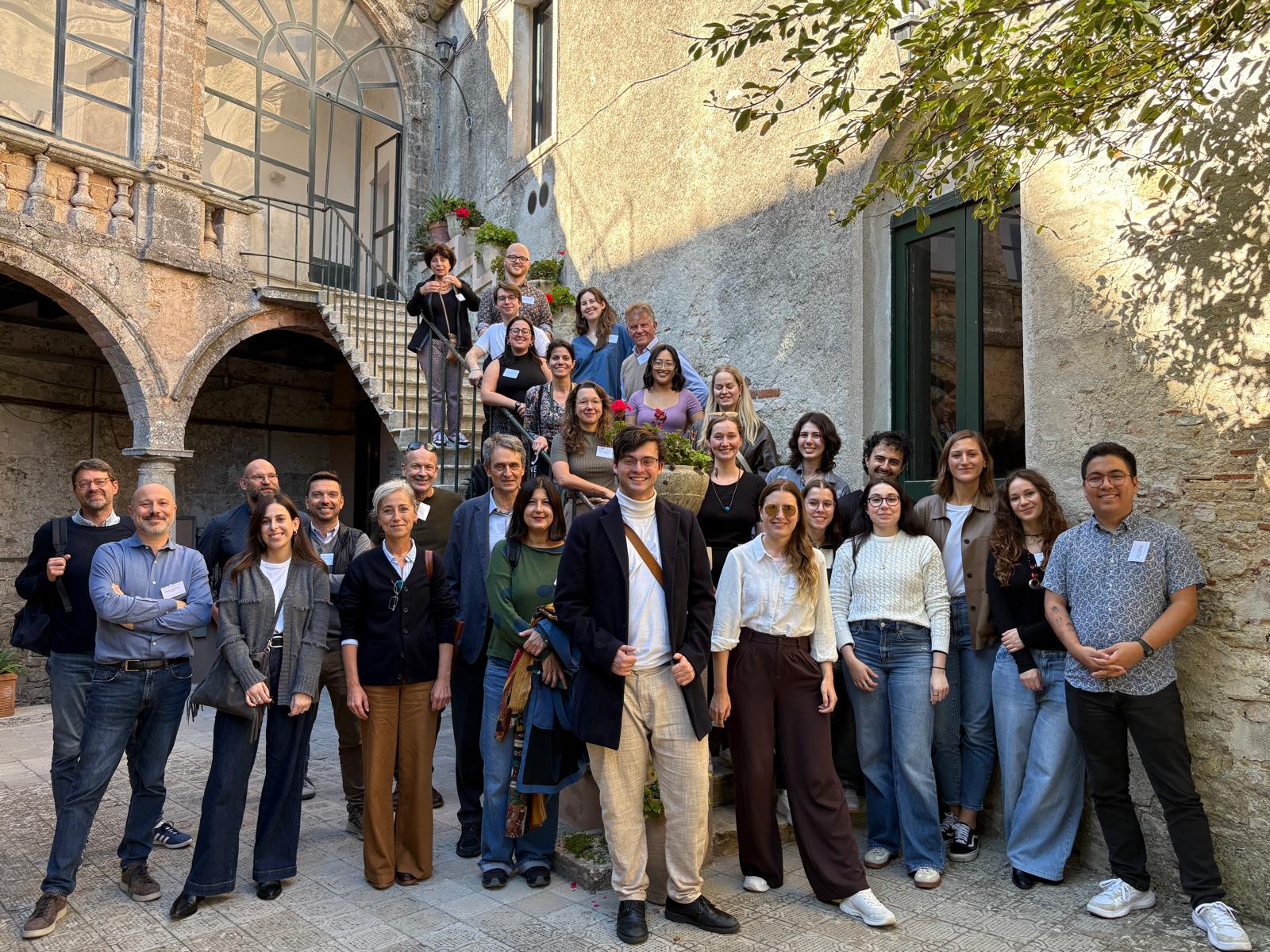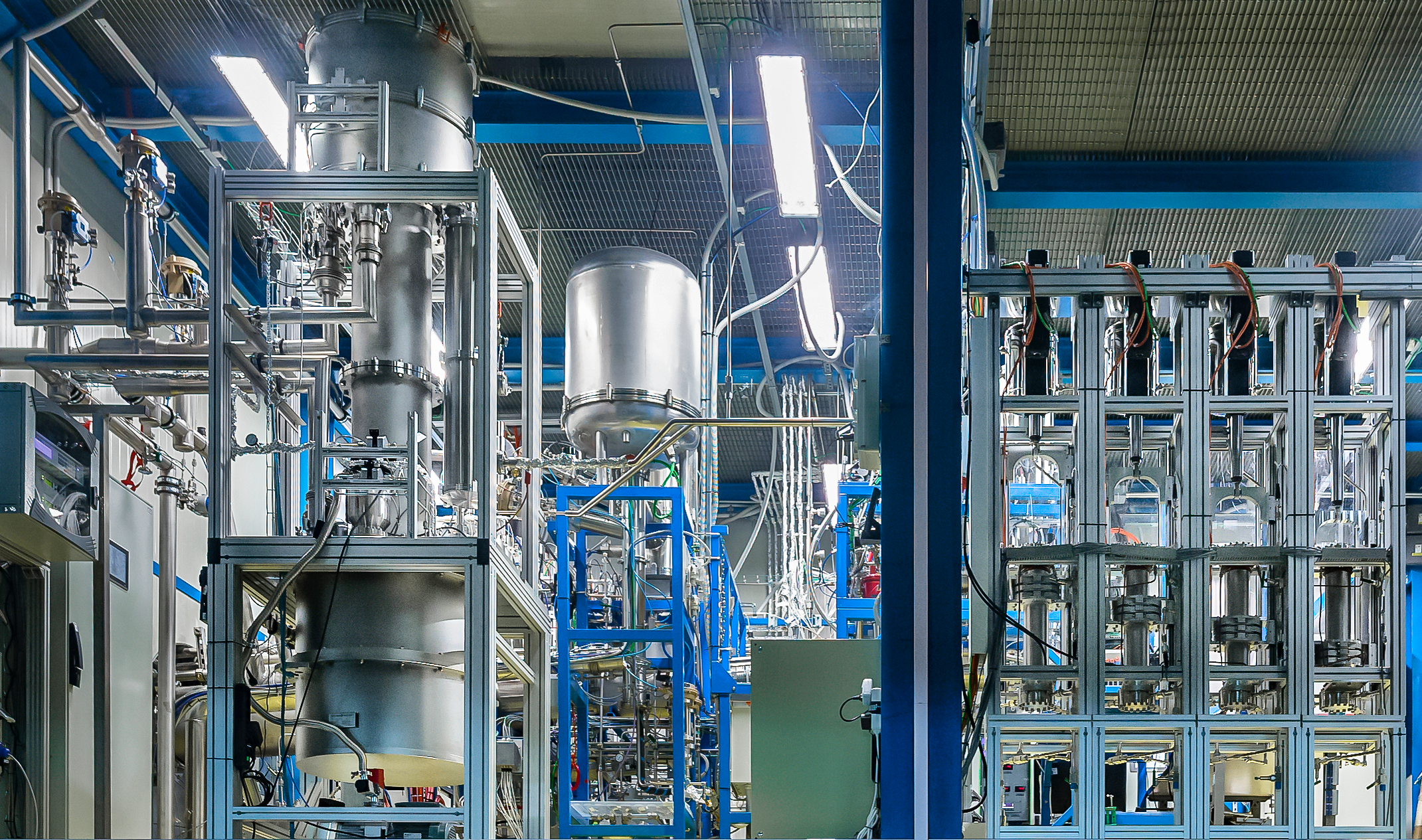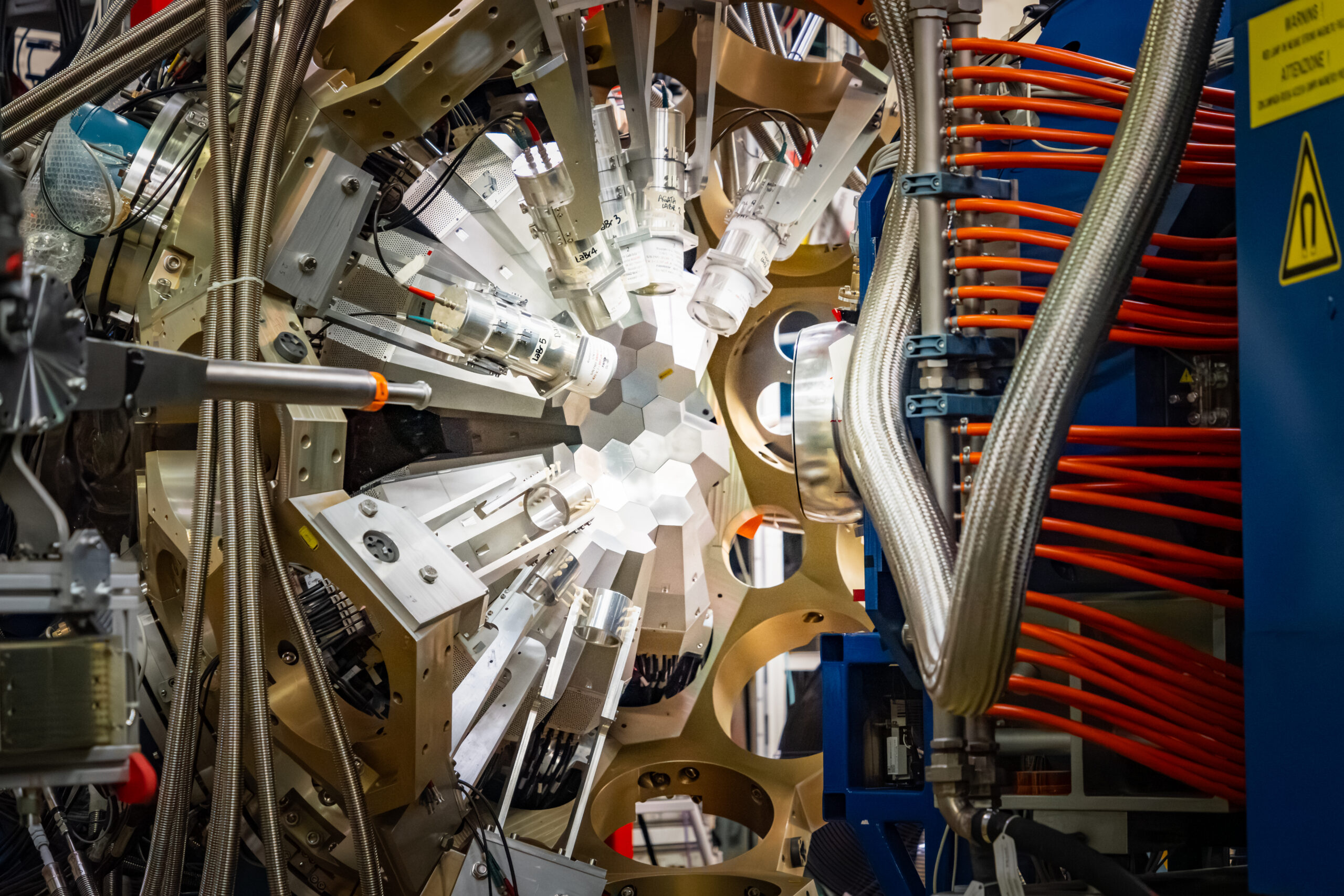 The first complete string of the KM3NeT neutrino telescope was installed on the seabed and connected to the shore in December. This marks the start of the construction of the experiment, which will be the biggest astrophysical neutrino detector in the northern hemisphere. It will occupy more than a cubic kilometre of seawater and comprise a network of several hundred vertical detection strings, each of which will be 700 metres tall and host 558 photomultipliers, the “eyes” of the detector. KM3NeT is an international collaboration in which Italian scientists, coordinated by the INFN, are on the front line. It is among the projects under selection for the new ESFRI (European Strategy Forum on Research Infrastructures) roadmap. The string, wound like a ball of wool, was transported to the KM3NeT-Italy site about a hundred kilometres off the coast of southern Sicily. It was then lowered into the water, anchored to the seabed at a depth of 3500 metres and connected to a junction box using a remotely operated submarine controlled from the boat. The junction box is connected by a 100 kilometre cable to the shore station located in Portopalo di Capo Passera in Sicily. The “ball” was then unwound and the structure assumed its definitive vertical “string” shape, kept taut by a submerged buoy. As soon as the string was powered on, the instruments at the shore station started to receive the first data from the particle sensors.
The first complete string of the KM3NeT neutrino telescope was installed on the seabed and connected to the shore in December. This marks the start of the construction of the experiment, which will be the biggest astrophysical neutrino detector in the northern hemisphere. It will occupy more than a cubic kilometre of seawater and comprise a network of several hundred vertical detection strings, each of which will be 700 metres tall and host 558 photomultipliers, the “eyes” of the detector. KM3NeT is an international collaboration in which Italian scientists, coordinated by the INFN, are on the front line. It is among the projects under selection for the new ESFRI (European Strategy Forum on Research Infrastructures) roadmap. The string, wound like a ball of wool, was transported to the KM3NeT-Italy site about a hundred kilometres off the coast of southern Sicily. It was then lowered into the water, anchored to the seabed at a depth of 3500 metres and connected to a junction box using a remotely operated submarine controlled from the boat. The junction box is connected by a 100 kilometre cable to the shore station located in Portopalo di Capo Passera in Sicily. The “ball” was then unwound and the structure assumed its definitive vertical “string” shape, kept taut by a submerged buoy. As soon as the string was powered on, the instruments at the shore station started to receive the first data from the particle sensors.
You might also be interested in

ORIGINS. Exploring Science Communication and Journalism

Nobel Prize in Physics 2025: congratulations to John Clarke, Michel H. Devoret and John M. Martinis

INFN statement in support of peace in Gaza and commitment to scientific diplomacy

XENONnT: record levels of purity achieved in the search for dark matter

Physics Photowalk 2025: the ten pictures on the Italian podium

Italy-China: important bilateral meeting between NSFC and INFN
26 September 2025
Read more Italy-China: important bilateral meeting between NSFC and INFN